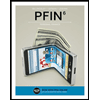
Concept explainers
1.
Pension expense: Pension expense is an expense to the employer paid as compensation after the completion of services performed by the employees.
Pension expense includes the following components:
- Service cost
- Interest cost
- Expected return on plan assets
- Amortization of prior service cost
- Amortization of net loss or net gain
To Calculate: The Company’s prior service cost at the beginning of 2019 with respect to D after amendment.
1.
Explanation of Solution
Calculate Company’s prior service cost.
Working Notes:
Calculate projected benefit obligation without amendment.
Compute the amount of annual retirement payment of D.
Compute the lump-sum retirement amount.
The lump-sum amount of the retirement represents the present value of the annual retirement benefit of $57,600 (1).
The present value of an ordinary annuity of $1, at the rate of 7% for 18 years is 10.05909 (Refer to Table 4 in Appendix).
Compute the amount of PBO.
The PBO is the present value of the retirement benefit.
The present value of $1 at the rate of 7% for 20
Calculate projected benefit obligation with amendment.
Compute the amount of annual retirement payment of D.
Compute the lump-sum retirement amount.
The lump-sum amount of the retirement represents the present value of the annual retirement benefit of $63,000 (4).
The present value of an ordinary annuity of $1, at the rate of 7% for 18 years is 10.05909 (Refer to Table 4 in Appendix).
Compute the amount of PBO.
The PBO is the present value of the retirement benefit.
The present value of $1 at the rate of 7% for 20
Therefore, Company’s prior service cost at the beginning of 2019 with respect to D is $14,037.
2.
To Calculate: The amount of prior service cost amortization that would be included in pension expense.
2.
Explanation of Solution
Calculate the amount of prior service cost amortization.
Therefore, the amount of prior service cost amortization that would be included in pension expense is $702.
3.
To Calculate: The service cost for 2019 with respect to D.
3.
Explanation of Solution
Compute the amount of service cost for 2019.
The service cost is the present value of the service benefit.
The present value of $1 at the rate of 7% for 19 periods is 0.27651 (Refer to Table 4 in Appendix).
Working Notes:
Compute the amount of annual service benefit of D.
Compute the lump-sum service benefit.
The lump-sum amount of the service benefit represents the present value of the service benefit of 2019 of $4,200 (7).
The present value of an ordinary annuity of $1, at the rate of 7% for 18 years is 10.05909 (Refer to Table 4 in Appendix).
Therefore, the service cost for 2019 with respect to D is $11,682.
4.
To Calculate: The interest cost for 2019 with respect to D.
4.
Explanation of Solution
Calculate the interest cost for 2019.
Therefore, the interest cost for 2019 with respect to D is $11,464.
5.
To Calculate: The pension expense for 2019 with respect to D.
5.
Explanation of Solution
The following table shows the pension expense for 2019.
| Particulars | Amount ($) |
| Service cost | 11,682 |
| Interest cost | 11,464 |
| Expected return on the plan assets | (15,000) (9) |
| Amortization of prior service cost | 702 |
| Pension expense | 8,848 |
Table (1)
Working Note:
Compute expected return on plan assets.
Therefore, the pension expense for 2019 with respect to D is $15,000.
Want to see more full solutions like this?
Chapter 17 Solutions
INTERMEDIATE ACCOUNTING RMU 9TH EDITION
- The actual cost of direct labor per hour is $16.25 and the standard cost of direct labor per hour is $15.00. The direct labor hours allowed per finished unit is 0.60 hours. During the current period, 4,500 units of finished goods were produced using 2,900 direct labor hours. How much is the direct labor rate variance? A. $3,625 favorable B. $3,625 unfavorable C. $4,350 favorable D. $4,350 unfavorablearrow_forwardOn January 1 of the current year, Piper Company issues a 4-year, non-interest-bearing note with a face value of $8,000 and receives $4,952 in exchange. The recording of the issuance of the note includes a: a. credit to Notes Payable for $4,952. b. credit to Discount on Notes Payable for $3,048. c. debit to Discount on Notes Payable for $3,048. d. debit to Cash for $8,000.arrow_forwardPLease helparrow_forward
- What is the budgeted total cost of direct materials purchases?arrow_forwardHy expert provide answer with calculationarrow_forwardDuring September, the assembly department completed 10,500 units of a product that had a standard materials cost of 3.0 square feet per unit at $2.40 per square foot. The actual materials purchased consisted of 22,000 square feet at $2.60 per square foot, for a total cost of $57,200. The actual material used during this period was 25,500 square feet. Compute the materials price variance and materials usage variance.arrow_forward
- Bluesy Electronics recorded the following financial data: Net Sales $720,500 Average Inventory at Cost = $80,200 Gross Margin Percentage = 42% Calculate the GMROI.arrow_forwardNeed help this question solutionarrow_forwardXYZ Company has a gross profit margin of 0.30, an operating profit margin of 18%, a total asset turnover ratio of 2.0x, and cost of goods sold of $700,000. The company's tax rate is 35%, and it has no debt. Calculate XYZ Company's Return on Assets (ROA).arrow_forward
 PFIN (with PFIN Online, 1 term (6 months) Printed...FinanceISBN:9781337117005Author:Randall Billingsley, Lawrence J. Gitman, Michael D. JoehnkPublisher:Cengage Learning
PFIN (with PFIN Online, 1 term (6 months) Printed...FinanceISBN:9781337117005Author:Randall Billingsley, Lawrence J. Gitman, Michael D. JoehnkPublisher:Cengage Learning Intermediate Accounting: Reporting And AnalysisAccountingISBN:9781337788281Author:James M. Wahlen, Jefferson P. Jones, Donald PagachPublisher:Cengage Learning
Intermediate Accounting: Reporting And AnalysisAccountingISBN:9781337788281Author:James M. Wahlen, Jefferson P. Jones, Donald PagachPublisher:Cengage Learning


